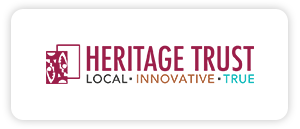Source: Brandon Hickie, OpenView Venture Partners
This blog will teach you how to apply eight different B2B market sizing approaches to quickly assess the value of a given market.
Quick Overview of 8 Approaches to Market Sizing
For B2B companies, market sizing is a complicated process because it evaluates purchases of companies as opposed to individuals. Therefore, referring to the US Census data or a more localized set of demographic data is not a sufficient approach for sizing a market opportunity.
Below I’ve introduced and explained eight primary B2B market sizing approaches. Over the next several weeks I will dive into each approach one at a time to highlight the pros and cons, provide step-by-step instructions on how to conduct it, and share an example of the approach in action.
- Analyst Spend Statistics Approach: This is a top-down approach (see my previous post for an explanation of top-down vs. bottoms-up market sizing) that can help you identify company size cut-off lines for target market definition, which can be applied to industry data to get a market estimate. This approach can only be used in analyst-tracked markets.
- Census-Based Approach: This is a bottoms-up B2B market sizing approach that enables you to size a market opportunity defined by industry, employment size, and/or geography. It relies on data collected via the US Business Census every five years. This approach is extremely sensitive to market definition and timing of the census survey. Therefore, it tends to overestimate market sizes. That said, it can give you a quick, general sense of magnitude.
- LinkedIn Top-Down Approach (to come next week): This is a worldwide top-down approach that enables you to quickly estimate the number of companies by size, geography, and industry. The accuracy of this approach will vary depending on the penetration of LinkedIn in a given market. The best way to get a sense of the accuracy of this approach is to compare the penetration of LinkedIn to a given country or sector type. If this data cannot be found, the best rule of thumb is that this approach tends to work best with white collar and more technical industries. One benefit of this method is that it has few duplicates and gives a more conservative view of the market as all of these companies can be voiced by actual individuals that work for them.
- LinkedIn Bottoms-Up Approach (to come next week): This is a bottoms-up B2B market sizing approach whereby you utilize LinkedIn to try and construct a list of all market opportunities using the company classification criteria (i.e. geography, size, industry, keyword searches, Year Founded, etc.). This approach is pretty accurate in the US and with white collar industries. However, it is pretty time consuming and is less effective outside of the US and with less tech and blue collar industries. Unlike other directory based bottoms-up approaches, this one does not suffer from nearly as many duplicate issues, and the company sizes are all validated.
- Directory Approach (to come): This is a bottoms-up approach where you identify online directories that list companies potentially within your target market, and you construct a list of all of these types of targets. The main problem with this approach is that the information is limited and rarely matches your specific market definition. Consequently, the list of companies usually needs to be validated via a second source, making the approach much more time consuming. It’s best to combine this approach with the LinkedIn bottoms-up approach to get better coverage.
- Power Curve Approach (to come): This top-down approach helps you focus on an important market sizing cue — heavy market share concentration in the target market being served by a company. This approach can only be used in highly-consolidated markets. It is extremely quick and very accurate, but only applies to a small subset of markets.
- Market Re-Construction Approach (to come): This is a top-down approach where you try to develop a sense of the market size by reconstructing it via public company quarterly filing data. This approach is viable in markets that are highly concentrated and where a significant share of the total market is held by public companies. This is an extremely quick and effective approach to sizing a market, but, unfortunately, it’s rarely an option. Issues related to matching market definitions and lack of publicly available data often make it untenable.
- Resource Constraint Approach (to come): This approach assumes that the key market constraints are a company’s resources, not the limits of a market. This approach can be used in all types of markets.
Before You Begin
Opportunity Size Triangulation: 3 Ways to View an Opportunity
Before we dive in, it is important to reiterate that each of these approaches comes with pros and cons, and it is best to validate your B2B market sizing estimates using multiple approaches.
Remember, no market sizing approach is perfect. For the best, most accurate results, try to take into account as much context as possible and examine a market opportunity from each leg of a triangulating approach.
Note: Prior to kicking-off any market opportunity assessment, I recommend thinking about the potential benefits of the analysis relative to the time commitment and evaluating alternative analysis approaches. Younger companies are always resource constrained, so it is important to wisely invest your time.
About Scale Finance
Scale Finance LLC (www.scalefinance.com) provides contract CFO services, Controller solutions, and support in raising capital, or executing M&A transactions, to entrepreneurial companies. The firm specializes in cost-effective financial reporting, budgeting & forecasting, implementing controls, complex modeling, business valuations, and other financial management, and provides strategic help for companies raising growth capital or considering M&A/recapitalization opportunities. Most of the firm’s clients are growing technology, healthcare, business services, consumer, and industrial companies at various stages of development from start-up to tens of millions in annual revenue. Scale Finance LLC has offices throughout the southeast including Charlotte, Raleigh/Durham, Greensboro, Wilmington, Washington D.C. and South Florida with a team of more than 40 professionals serving more than 100 companies throughout the region.







